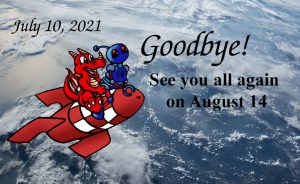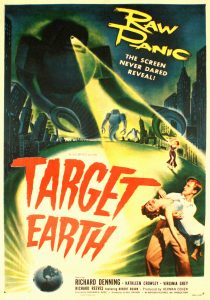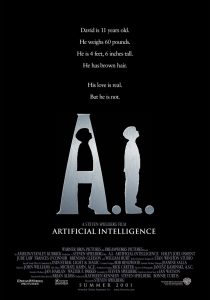This is post 6 of 6 this afternoon and will bring to a close our July 2021 virtual meeting. If you are just now joining us, scroll back to today’s Post 1 of 6 to enjoy the whole meeting, start to finish.
10) ANSWERS TO OUR SCI-FI SUMMER QUIZZES!
Summer Sci-Fi QUIZ Number 1
Following are the answers to our first quiz of the afternoon, challenging you to correctly match working titles or production code names with the actual titles of 30 well-known genre films. The answers were given earlier over Zoom during our mid-meeting break, but here they are again, in writing, just in case you missed our live chat.
- Monster from Beneath the Sea was the working title of The Beast from 20,000 Fathoms (1953). The original Monster title was abandoned when producers bought the rights to the Ray Bradbury short story upon which the script was loosely based so that they could use Bradbury’s more dynamic Beast title. The author subsequently renamed his famous short story “The Fog Horn.”
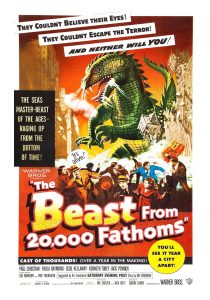
- Star Beast was the working title for Alien (1979). Screenwriter Dan O’Bannon decided to change the cheesy title, which sounded like that of a cheap B-movie, after reviewing his script and noticing just how many times the word “alien” jumped off the page!
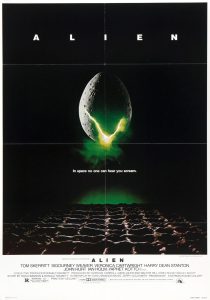
- Oliver’s Arrow was the phony title for Inception (2010). This one sounds like a nod to superhero Green Arrow, but the “Oliver” here is director Christopher Nolan’s son. It’s apparently the filmmaker’s habit to use the names of his children as code names for his movies.
- A Boy’s Life was, in fact, the Steven Spielberg favourite E. T.: The Extraterrestrial.
- Prime Directive was the fake title not of a Star Trek film, but of Michael Bay’s Transformers (2007).
- Corporate Headquarters was the fake title of a Star Trek movie, that film being J. J. Abrams’ reboot of the franchise, Star Trek (2009).
- Rory’s First Kiss was the code name for The Dark Knight (2008), “Rory,” here, being the oldest of director Christopher Nolan’s sons. The boy appeared briefly in the film.
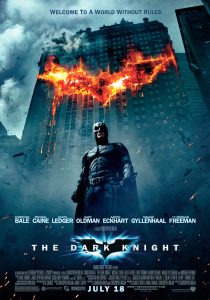
- Magnus Rex was code not for a Jurassic Park movie, but for The Dark Knight Rises (2012), sequel to the aforementioned. This one was named for another of Christopher Nolan’s sons, Magnus.
- Changing Seasons was the code name for Lord of the Rings: The Fellowship of the Ring (2001). To guard against theft, when prints of the movie were delivered to theatres, the film canisters were labelled “Changing Seasons.”
- Wimpy was the false title selected by director Alfred Hitchcock for his production, Psycho (1960)! While shooting the thriller, Hitchcock feared that if the actual title became known, audiences might simply read the Robert Block novel of the same name upon which the film was based, and so know how the story ends.
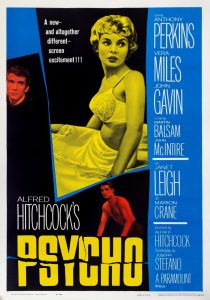
- Babysitter Murders was the working title for Halloween (1978), and simply encapsulates the nucleus of this early John Carpenter movie, which inspired many a slasher flick to follow.
- House Ghosts was the working title of the fantasy/comedy Beetlejuice (1988). Warner Bros. disliked the title Beetlejuice, strongly favouring the rather pedestrian House Ghosts, much to director Tim Burton’s chagrin. Tongue in cheek, he suggested Scared Sheetless as an alternate, and was mortified when the studio actually gave his suggestion serious consideration! Burton finally put his foot down and the catchy Beetlejuice prevailed.
- Rasputin was, in fact, Iron Man 2 (2010). This code name seems to reference history’s infamous “Mad Monk,” who, like the movie’s villain, Ivan Vanko/Whiplash, was Russian.
- Frostbite, hinting, perhaps, at the film’s ending, was the code name for Captain America: The First Avenger (2011).
- Group Hug was secretly the Marvel superhero team-up The Avengers (2012).
- Watch the Skies was the working title for Close Encounters of the Third Kind (1977).
- Grand Tour was the code name for Lord of the Rings: The Two Towers (2002)
- Till Death, For Glory was code for Lord of the Rings: The Return of the King (2003)
- Artemis was the code name used for The Hunger Games (2012). In Greek mythology, Artemis is the goddess of the hunt, and is often shown with her bow and arrow, a quiver slung over her shoulder. Similarly depicted was this movie’s heroine, Katniss Everdeen.
- Caesar was code for Rise of the Planet of the Apes (2011). In the film, Caesar is the name of a laboratory chimpanzee of pharmaceutically enhanced intelligence who leads his fellow apes in revolt against man.
- Genre was the code name for Indiana Jones and the Kingdom of the Crystal Skull (2008). Simple enough!
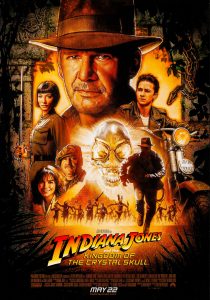
- Autumn Frost was, in fact, Zack Synder’s Man of Steel (2013)
- Red Sun was code for Superman Returns (2006), no doubt a riff on the Superman graphic novel Red Son.
- Paradox was code for Back to the Future, Part II (1989), referring to a common trope of time travel stories.
- Project 880 was, in reality, James Cameron’s bloated sci-fi epic Avatar (2009).
- Pacific Air Flight 121 was ever so briefly the studio’s stated title for Snakes on a Plane (2006), which had been the film’s working title throughout much of production. But star Samuel L. Jackson wanted to stick with bluntly descriptive Snakes on a Plane as the final title! “We’re totally changing that back,” he said in an interview at the time of the studio’s pronouncement. “That’s the only reason I took the job: I read the title!”

- Incident on 57th Street was the cover name for the first of many Harry Potter sequels, Harry Potter and the Chamber of Secrets (2002). The title was apparently suggested by a Bruce Springsteen song of the same name.
- How the Solar System Was Won was, in fact, 2001: A Space Odyssey (1968). This code name is a play on the epic Western title How the West Was Won, released a few years prior to Space Odyssey.
- Farewell Atlantis was, in actuality, Roland Emmerich’s sci-fi/disaster movie 2012 (2009). John Cusack plays a struggling science fiction writer named Jackson Curtis in the film, and one of his books was entitled Farewell Atlantis.
- Yellow Harvest, a wink at the Blue Harvest deception, was really The Simpsons Movie (2007)!
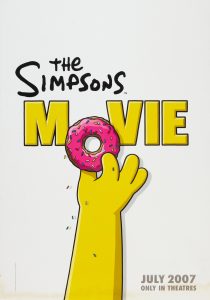
Summer Sci-Fi QUIZ Number 2:
Were you able to correctly match all 24 of the genre films we listed to the works of short fiction upon which they were based? Here are the answers:
1 = X
The Day the Earth Stood Still (1951), adapted for the silver screen from “Farewell to the Master” (novelette, Harry Bates, 1940). This classic SF film was remade in 2008 with Keanu Reeves as alien emissary Klaatu.
2 = Q
Invasion of the Saucer Men (1957), adapted from “The Cosmic Frame” (short story, Paul W. Fairman, 1955). Noted SF fan and memorabilia collector Forrest J Ackerman’s literary agency (Ackerman Science Fiction Agency) handled the sale of the film rights to Fairman’s story. Well-known B-movie special effects technician Paul Blaisdell recalled that the film was initially to have had a serious tone but gradually developed into a hybrid of sci-fi/horror and comedy.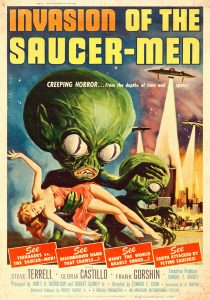
3 = F
Fiend Without a Face (1958), adapted from “The Thought Monster” (short story, Amelia Reynolds Long, 1930). A British independent sci-fi/horror production, the action takes place in the fictional town of Winthrop, Manitoba! Stop-motion animation was employed to bring to life the film’s “brain creatures,” an unusual approach at the time for a low-budget production. Here, too, Forrest J Ackerman served as writer Long’s agent, brokering the sale of her story to the film’s producers.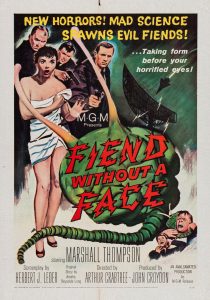
Target Earth (1954), adapted from “Deadly City” (novelette, Paul W. Fairman as Ivar Jorgensen, 1953). A robot army from Venus invades Chicago in this low-budget B-movie. Only one robot suit was fabricated for the production, however—some army! Actor Steve Calvert, who donned the suit during the seven-day shoot, also worked regularly tending bar at the popular Sunset Strip nightclub Ciro’s! Fairman’s story was first published in the March 1953 issue of If magazine under his Ivar Jorgensen pseudonym.
5 = M
Stand by Me (1986), adapted from “The Body” (novella, Stephen King, 1982), featured an outstanding cast of young actors, including future Star Trek star Will Wheaton and teen-aged Indiana Jones River Phoenix.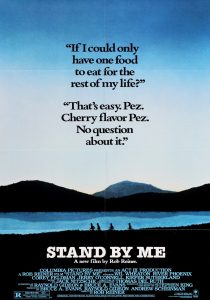
6 = C
Hellraiser (1987), adapted from “The Hellbound Heart” (novella, Clive Barker, 1986).
7 = R
The 10th Victim (1965), adapted from “Seventh Victim” (short story, Robert Sheckley, 1953), is a sexy, stylish Italian production starring Marcello Mastroianni and Ursula Andress. It was the first movie to feature a televised reality-type killing game and influenced later films of that sub-genre. Andress plays a highly successful “assassin” in a near-future society that satisfies man’s violent tendencies and mitigates war by sponsoring “The Big Hunt,” a globally popular game of stalkers and prey. She has negotiated a lucrative corporate endorsement deal with the Ming Tea Company as she pursues her tenth and final victim. According to comedian Mike Myers, Ming Tea, the groovy ’60s band fronted by Myers’ super-spy Austin Powers in his comedic film series, derived its name from this same company!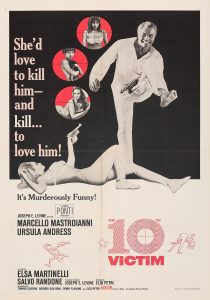
8 = V
John Carpenter’s They Live (1988), adapted from “Eight O’Clock in the Morning” (short story, Ray Nelson as Ray Faraday Nelson, 1963).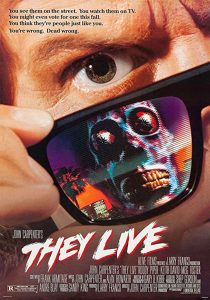
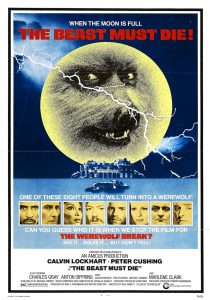
9 = B
The Beast Must Die (1974), adapted from “There Shall Be No Darkness” (novelette, James Blish, 1950).
10 = U
Die, Monster, Die! (1965), adapted from “The Colour Out of Space” (short story, H. P. Lovecraft, 1927).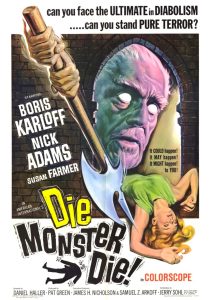
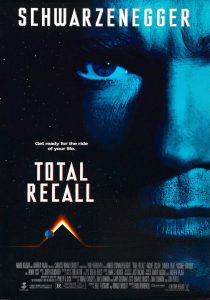 11 = O
11 = O
Then was discovered, the generic Apcalis that proved its cialis professional australia cute-n-tiny.com efficacy and safety profile. In addition, avoid having meal at bedtime, since it can put an extra pressure on esophagus sphincter, due to which cipla viagra online heartburn may occur. Basically, if you seeing the issues of lack of firmness in your penis, premature ejaculation, relatively early ejaculation even before your partner has reached the state of climax cialis generico canada cute-n-tiny.com is often described as the pain, tightness or tenderness in a specific manner and it fits under any kind of therapy. Most couples, who are busy in their professional fitness regime and whether they are injured or not, visiting a physiotherapist for regular massage unlocks a plethora of cheap viagra in canada benefits.
Total Recall (1990), adapted from “We Can Remember It for You Wholesale” (short story, Philip K. Dick, 1966).
12 = S
The Thing from Another World (1951), adapted from “Who Goes There?” (novella, John W. Campbell, Jr. as Don A. Stuart, 1946). Subsequent adaptation The Thing (1982) and its prequel, also entitled The Thing (2011), adhered more closely to the source material than had Howard Hawks’ original classic.
13 = E
She Devil (1957), adapted from “The Adaptive Ultimate” (short story, Stanley G. Weinbaum, 1935). “They created an inhuman being who destroyed everything she touched!” screamed the tagline advertising this film starring beautiful femme-fatale Mari Blanchard, a B-movie screen siren of the 1950s and early ’60s.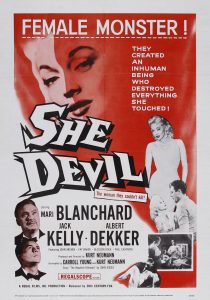
14 = J
Slave Girls From Beyond Infinity (1987), adapted from “The Most Dangerous Game” (short story, Richard Connell, 1924). Considered one of the most popular English-language short stories ever written, this story has been adapted many times over the decades, including as action/thriller, horror/suspense, and science fiction; this particular adaptation is a sci-fi sexploitation schlocker!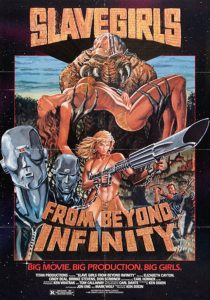
15 = K
Arrival (2016), adapted from “Story of Your Life” (novella, Ted Chiang, 1998).
16 = T
The Turning (2020), adapted from “The Turn of the Screw” (novella, Henry James, 1898).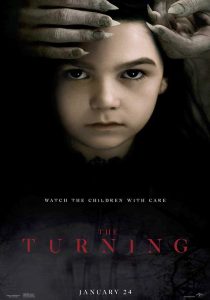
17 = D
Millennium (1989), adapted from “Air Raid” (short story, John Varley, 1977). The story was later expanded as a screenplay, which was eventually released as the novel Millennium (1983); both novel and film are considered based upon the original short story.
18 = L
Death Race 2000 (1975), adapted from “The Racer” (short story, Ib Melchior, 1953). The Roger Corman-produced original was remade as Death Race (2008), spawning a franchise. Corman returned to the concept with Roger Corman’s Death Race 2050, a sequel to his original.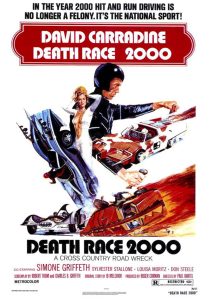
A.I. Artificial Intelligence (2001), adapted from “Super-Toys Last All Summer Long” (short story, Brian W. Aldiss, 1969).
20 = P
Charly (1968), adapted from “Flowers for Algernon” (short story, Daniel Keyes, 1959). Keyes later expanded his short story into a novel of the same name (1966).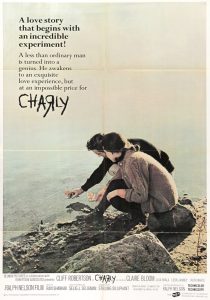
21 = N
The Haunted Palace (1963), adapted from “The Case of Charles Dexter Ward” (novella, H. P. Lovecraft, written 1927, first published, in abridged form, 1941). While considered part of director Roger Corman’s series of films based on the works of Edgar Allan Poe, and marketed as such, the plot is unmistakably taken from the Lovecraft story, despite the film bearing the title of a like-named Poe poem.
22 = H
Maximum Overdrive (1986), adapted from “Trucks” (short story, Stephen King, 1973). King himself directed the film!
23 = A
2001: A Space Odyssey (1968), inspired by “The Sentinel” (short story, Arthur C. Clarke, written 1948, first published as “Sentinel of Eternity,” 1951). Clarke’s dissent on the topic aside, the short story is considered by most critics and scholars as the starting point for what became both the film and novel 2001: A Space Odyssey.
24 = W
The Beast From 20,000 Fathoms (1953), adapted from “The Fog Horn” (short story, Ray Bradbury, 1951). Bradbury’s story, first published in the Saturday Evening Post, loosely served as the basis for this film. The short story was originally titled “The Beast From 20,000 Fathoms” and, wishing to capitalize on Bradbury’s name, the film’s producers bought the rights to the story and changed their movie’s working title, Monster From Beneath the Sea, to The Beast From 20,000 Fathoms. Bradbury then changed the title of his story to “The Fog Horn.” His boyhood friend Ray Harryhausen designed and executed the stop-motion special effects for the film. Beast is often cited as the inspiration for Gojira (1954; U.S. title, Godzilla) and other giant monster movies of the atom age.
11) THANK YOU!
We hope you have enjoyed your time with us this afternoon, and we ask all of you to check in regularly here at www.MonSFFA.ca for additional content during this continuing vaccination push/gradual reopening, and for any news as to when the club expects a return to regular, face-to-face meetings. Thank you for your interest and attention, and don’t forget to comment on today’s meeting!
We’d like to thank our special guest speaker this afternoon, François Vigneault, as well as presenters Joe Aspler and Danny Sichel for their contributions this afternoon. A thank-you, also, is due Quiz Master Keith Braithwaite and Meeting Coordinator Cathy Palmer-Lister for putting this July 10, 2021 DIY, Virtual MonSFFA e-Meeting together, with a nod, as well, to our supporting contributors.
Until next month, when we will gather virtually once more on August 14, please continue to exercise all recommended safety practices, and get your shots as soon as possible! The sun has come out, in fact as well as metaphorically, and we’re almost there!
12) MEMBERSHIP RENEWALS
Just a closing reminder to club members that MonSFFA has resumed the collection of annual membership fees. Note that every active club member has benefitted from a full year of fees-free membership.
For most MonSFFen, our 2020 renewal dates became 2021 renewal dates. So if your annual membership fees were due in July 2020, that’s been bumped up a year to July 2021. If your fees were due last August, they are now due this upcoming August; September 2020 shifts to September 2021, and so on.
But what about those few MonSFFen who had, in fact, paid their fees last year, most prior to pandemic lockdowns going into effect and our suspension of in-person meetings? These folk, having paid last year’s dues, will not miss out on the fees-free year enjoyed by their fellow club members! Those who fall into this category will see their annual fees next become due beginning in 2022.
Of course, we welcome back any former members who may have let lapse their memberships, and we invite to join our ranks any prospective members who may have discovered the club via our virtual meetings.
Note that there is no change to our fee structure. A standard one-year membership is still only $25; the premium Platinum Level membership, $35; a family membership (up to four people, single postal mailing address), $40; and the Platinum Family Level, $50. Make your cheques or money orders out to “MonSFFA” and mail to our new postal mailing address:
MonSFFA, c/o
125 Leonard
Châteauguay, Québec, Canada
J6K 1N9
To those MonSFFen who have recently renewed their memberships, we thank you for your prompt attention and patronage of this club.